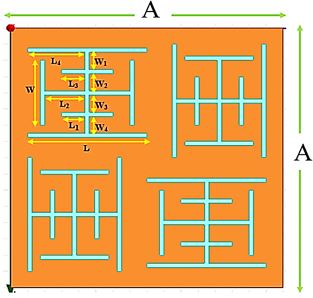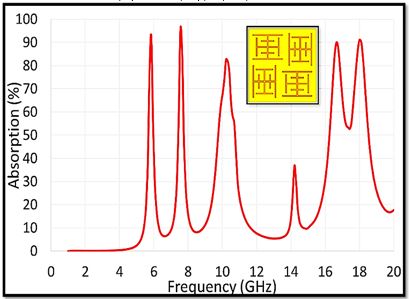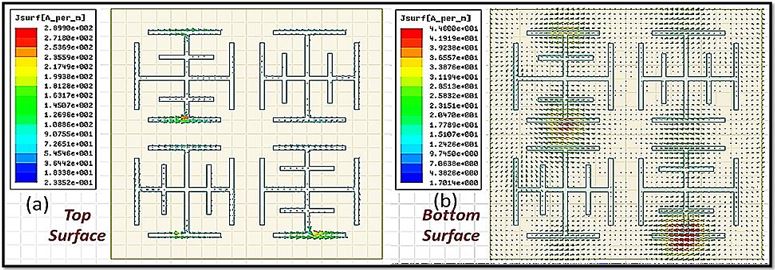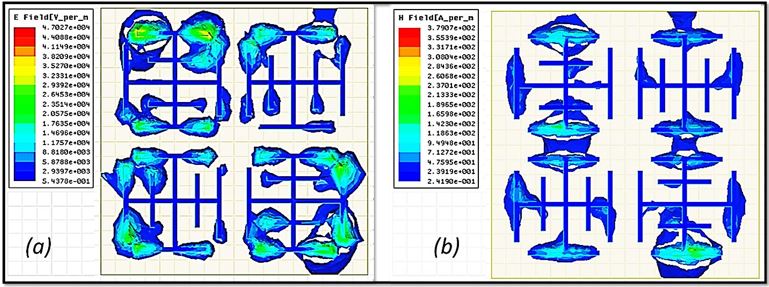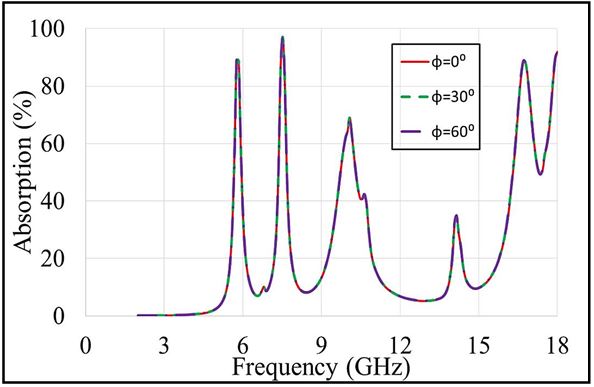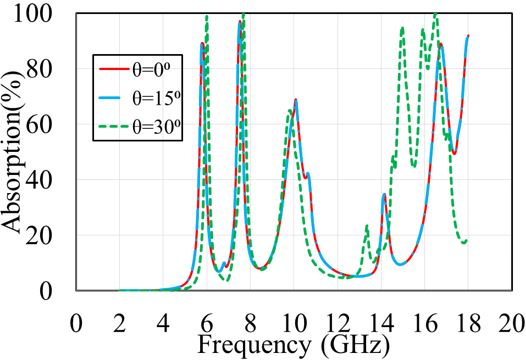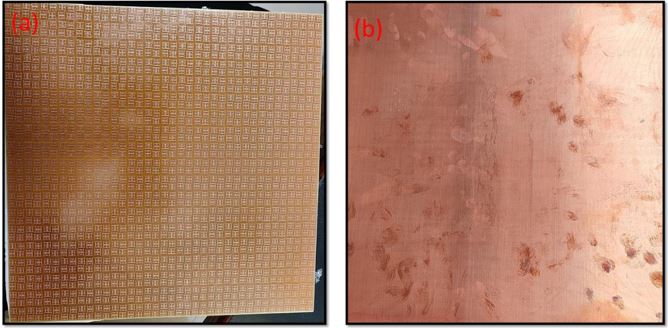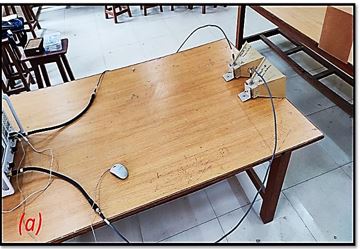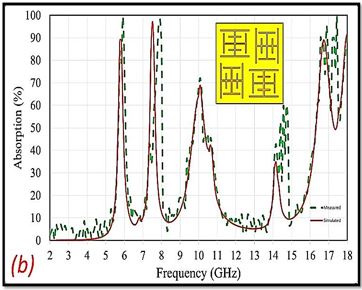Ultrathin Polarization Insensitive Multiband Metamaterial Microwave Absorber for C, X and Ku Band Applications
Sood D1*
DOI:10.5281/zenodo.10984018
1* Deepak Sood, University Institute of Engineering and Technology and Kurukshetra University, Haryana, India.
A polarization independent multiband metamaterial microwave absorber is designed and characterized. The absorber design comprise a 0.03 mm thick copper metallic pattern arranged in fourfold symmetric manner to complete one unit cell. Each metallic pattern is designed using multiple strip resonators of different lengths connected together. The top layer is separated by 1.56 mm thick FR4 dielectric from back annealed 0.03mm thick continuous copper plate. The simulated responses derived using HFSS shows that the intended absorber exhibits five absorption peaks at 5.9 GHz, 7.8 GHz, 10.9 GHz, 17 GHz and 18 GHz. with an absorption of 92.5%, 99%, 83%, 90% and 91% respectively. The electrical dimensions of the unit cell are 0.314λ × 0.314λ computed at 5.9 GHz. The designed structure is polarization independent due to four-fold symmetric design configuration and therefore exhibit the same absorption response for both TE and TM polarizations for normal incident of the EM wave. The absorption response for oblique incidence angles has also been examined for both polarizations and the absorber exhibit above 80% absorption at oblique angles of incidence. The multiband absorption make it a potential candidate for various RF applications such as RCS reduction, EMI shielding etc.
Keywords: metamaterial absorber, multiband, ultrathin, microwave absorption
| Corresponding Author | How to Cite this Article | To Browse |
|---|---|---|
| , , , University Institute of Engineering and Technology and Kurukshetra University, Haryana, , India. Email: |
Sood D, Ultrathin Polarization Insensitive Multiband Metamaterial Microwave Absorber for C, X and Ku Band Applications. Appl. Sci. Eng. J. Adv. Res.. 2022;1(5):15-20. Available From https://asejar.singhpublication.com/index.php/ojs/article/view/94 |


 ©
© 